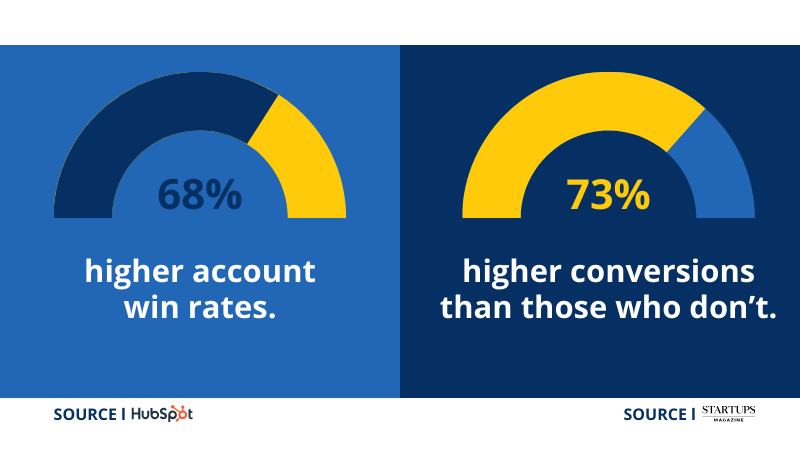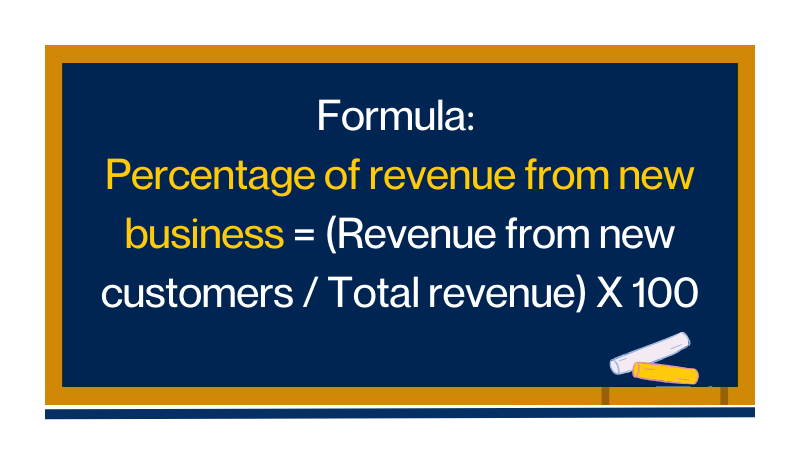Brick-and-mortar stores and mobile businesses alike need the power of a Point of Sale (POS) system to keep up with modern times. Gone are the days of simple cash registers; today’s POS is a versatile tool that handles everything from sales to inventory management, customer data, and financial tracking.

Today, it’s at the heart of operations, the software market has soared from $12.2 billion in 2018 and is projected to grow to a staggering $42.5 billion by 2027. These figures emphasize the crucial role of POS in business success.
While it’s clear that every business needs POS systems that are both powerful and adaptable, the real challenge lies in convincing merchants that your system is the perfect fit.Learn how to successfully market and sell your point-of-sale system with this informative guide:
Selling POS Systems: How to Do it Right
Understand your product
When selling retail POS systems, the very first a seller should have is product knowledge.
Having this allows you to effectively communicate the unique value proposition to customers. This not only builds trust but also empowers your team to confidently address customer concerns.
Moreover, being well-informed about the features, functionalities, and advantages of your POS system enables you to tailor your offerings to meet specific customer needs, helping resolve issues efficiently and provision of relevant insights that enhance customer experience.
Looking to sell your POS system? Increase your sales fast with expert POS marketing.
What do you want to learn?
Following are some of the POS types commonly used today.

Self-service kiosks
These are especially popular in fast-food and casual dining restaurants and other self-service businesses like bank ATMs, retail stores, gas stations, hotels, hospital check-ins, digital receptions in offices, queuing systems at governmental institutions, or (visitor) registration kiosks at healthcare providers.
Mobile POS systems
These operate via smartphones. Merchants receive a small scanner that connects to their smartphone or tablet, and the necessary software is usually free. The provider typically charges a percentage of each transaction. Examples include Square, PayPal Here and Shopify POS.
Tablet POS systems
Using iPads or Android tablets, these systems cater to various businesses, from retail to restaurants, with pricing models like monthly fees or transaction charges. Clover, Toast, and Lightspeed are among the most popular in this category.
Online POS sale solutions
With existing devices like computers or tablets, businesses can process sales without expensive hardware. Ideal for small shops, boutiques, and service-based businesses, these systems provide remote access and scalability.
Multichannel POS systems
These track inventory, orders, and sales in one place, and manage sales across different platforms like stores, online shops, and delivery services. Examples are Lightspeed Retail for large and complex inventory and Toast, which works best for restaurants.
Open-source POS systems
These POS systems are software solutions that provide public access to their source code, allowing users to inspect, alter, and enhance the software as needed. While often free to use, customization, support, or maintenance might incur costs. Floreant POS and Odoo are commonly used platforms for this purpose.
Terminal POS systems
Terminal POS is a traditional, hardware-based system for brick-and-mortar stores, featuring a dedicated machine with a touchscreen and keypad for sales, inventory, and payment processing, generating printed receipts, and integrating with other business software. Notable examples are Ingenico and Verifone.
Know your Ideal Customer Profile

Defining your ideal customer profile (buyer persona) and understanding business needs is critical for sales effectiveness, as it leads to 68% higher account win rates. Marketers using buyer personas experience 73% higher conversions than those who don’t.
The precision provided by detailed customer profiles, including industry, company size, location, budget, and pain points enables sales teams to identify ideal customers, craft a tailored approach, and demonstrate how the POS system directly solves customer challenges.
Understanding your target customer involves delving into several key areas:
- Demographics: Define your ideal customer on a personal level, considering factors like age, education, and job title.
- Firmographics: Analyze the company’s characteristics, including size, industry, location, and revenue.
- Psychographics: Gain insights into your customers’ values, beliefs, and lifestyle preferences.
- Technographics: Identify the technology stack used by your target companies. This information is crucial for aligning product development and marketing strategies with customer needs.
Leverage customer data for retargeting
Successful POS selling requires both prospecting and strategic customer retargeting. Prospecting is vital for acquiring new clients while retargeting existing customers maximizes return on investment.
Leveraging customer data allows businesses to identify valuable segments, tailor marketing efforts, and re-engage potential customers. Updating customer information ensures accurate targeting, while analyzing customer behavior patterns uncovers opportunities to expand reach through lookalike audiences.
Combining these strategies helps companies build stronger customer relationships that increase sales and drive long-term growth.
Identify fresh market opportunities

Continually seeking new market opportunities and new avenues for customer satisfaction are crucial for ensuring business success and maintaining a competitive edge.
Expanding into new geographical regions can be a strategic imperative when domestic markets mature. Regions with robust economic prospects, such as the Asia Pacific and North America, often present attractive options for expansion. Proactively exploring these markets sets your POS business for sustained success and increased market share.
Check out our case study on how a business providing systems for financial, sales, and accounting management achieved sales success with expert lead generation. Discover how Callbox Australia secured new clients for this business management solutions provider expanding in APAC.
Establish clear sales targets and metrics
Most business owners concentrate on end goals such as closed sales and acquiring new clients, as these metrics signify success. However, focusing solely on these objectives does not guarantee achievement. Establishing clear goals and performance metrics for your sales team, particularly in POS selling, is essential.
The right benchmarks help identify what is and isn’t working, highlight potential issues before key targets are missed, and ensure efforts are aligned with broader business strategies. These metrics facilitate effective resource allocation, and progress tracking, and foster a competitive spirit among sales representatives.
Examples of sales metrics include:
Total Revenue – Also known as gross sales or turnover, is a key indicator of your business’s financial health and success. It represents the total income generated from all operational and sales activities across all products and services.

Formula: Total revenue = Quantity of products and services sold x Price of the product or service
Market Penetration – A higher market penetration rate indicates greater opportunities for growth and revenue. This metric provides valuable insights into market potential and helps develop strategies to increase market share.

Formula: Percentage of revenue from new business = (Revenue from new customers / Total revenue) X 100
Year-Over-Year Growth – Year-over-year (YoY) growth compares a company’s revenue from one year to the next. This metric helps evaluate how well the business is performing, growing, and meeting its goals by revealing trends and assessing the impact of strategies.

Formula: YoY Growth = ((Current Year Metric – Previous Year Metric) / Previous Year Metric) * 100
Net Promoter Score (NPS) – Net Promoter Score (NPS) measures how likely customers are to recommend your business to others. Tracking NPS helps you understand customer experiences and make improvements to boost satisfaction. This, in turn, strengthens customer relationships, increases retention, and supports long-term business growth.
Cost of Selling – Cost of selling, or selling expenses, includes the costs involved in selling your products or services. Measuring this as a percentage of revenue helps you see how efficiently your sales process is working. It also shows the cost of acquiring new customers and helps improve revenue growth and profit margins.
Get more leads for your POS and Payment Processing System Now!
Focus on benefits instead of features
Customers are mainly concerned with how a product solves their problems, not its technical specifications. By focusing on how the product can ease operations, increase efficiency, and generate higher revenue, your sales teams can more effectively engage customers to purchase your product. Bundling additional services can further enhance the overall value proposition and increase customer satisfaction.
Sell your product using a multi-channel approach
Sales teams often prioritize short-term gains over long-term growth by neglecting multi-channel strategies. This oversight limits their ability to reach a wider audience and maximize POS system sales.
By combining direct sales, online channels, partnerships, trade shows, social media, and email marketing, a multi-channel strategy helps you reach a wider market, generate leads, and drive sales effectively.
This is because these channels offer opportunities to engage potential customers, showcase product features, and build strong customer relationships. A well-executed strategy contributes to long-term success in the POS market.
Wrapping it up…
POS system marketing demands a strategic approach focused on solving customer pain points rather than simply pitching products. Outsourced sales and marketing are crucial here. This is where Callbox becomes an invaluable asset. By leveraging Callbox’s lead generation and multi-channel communication capabilities, sales teams can effectively identify, engage, and convert prospects.
Standing out in today’s competitive market requires more than just a good product. It demands a comprehensive sales strategy that delivers tangible value to customers. Callbox empowers sales teams to achieve this by providing the right marketing tools and insights needed to succeed.
Are you ready to transform your POS sales? Follow this guide and boost your outcomes by outsourcing with us.
Contact us today to learn how Callbox can revolutionize your business













